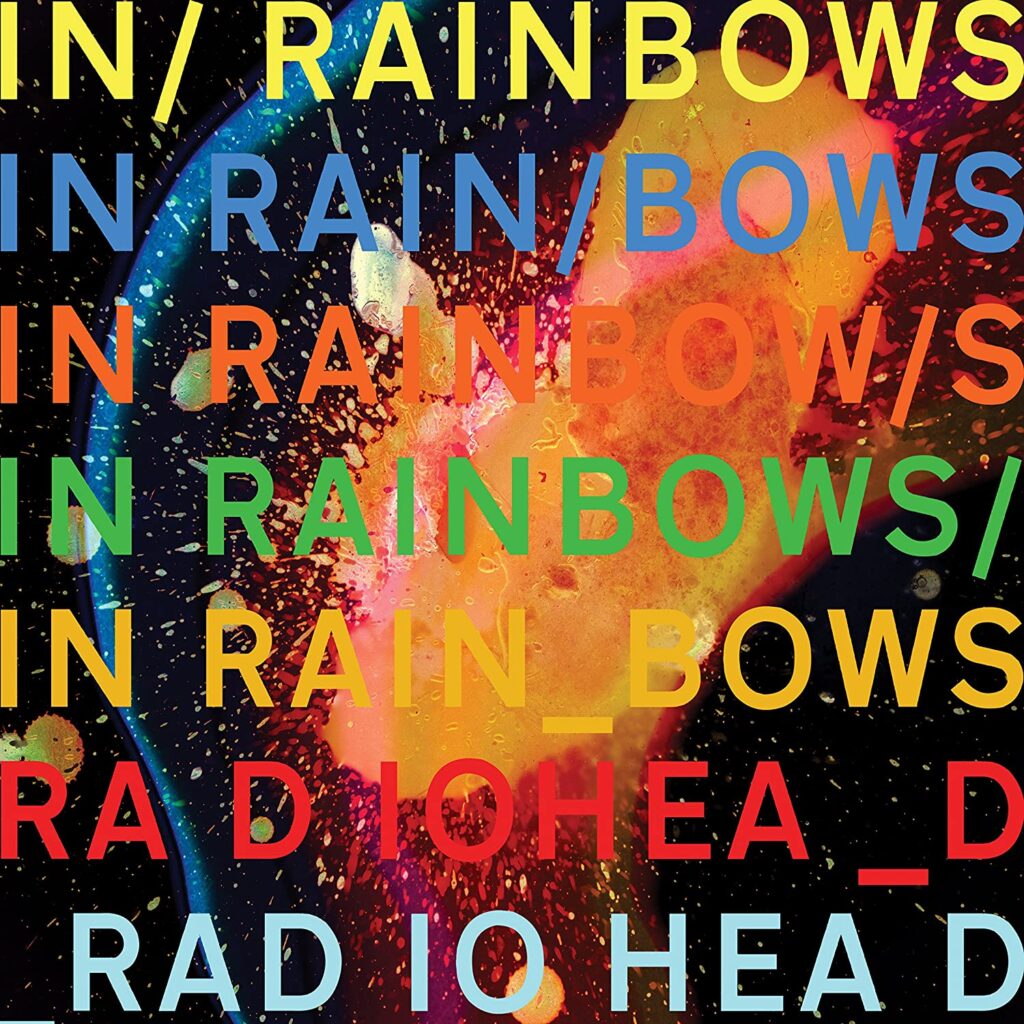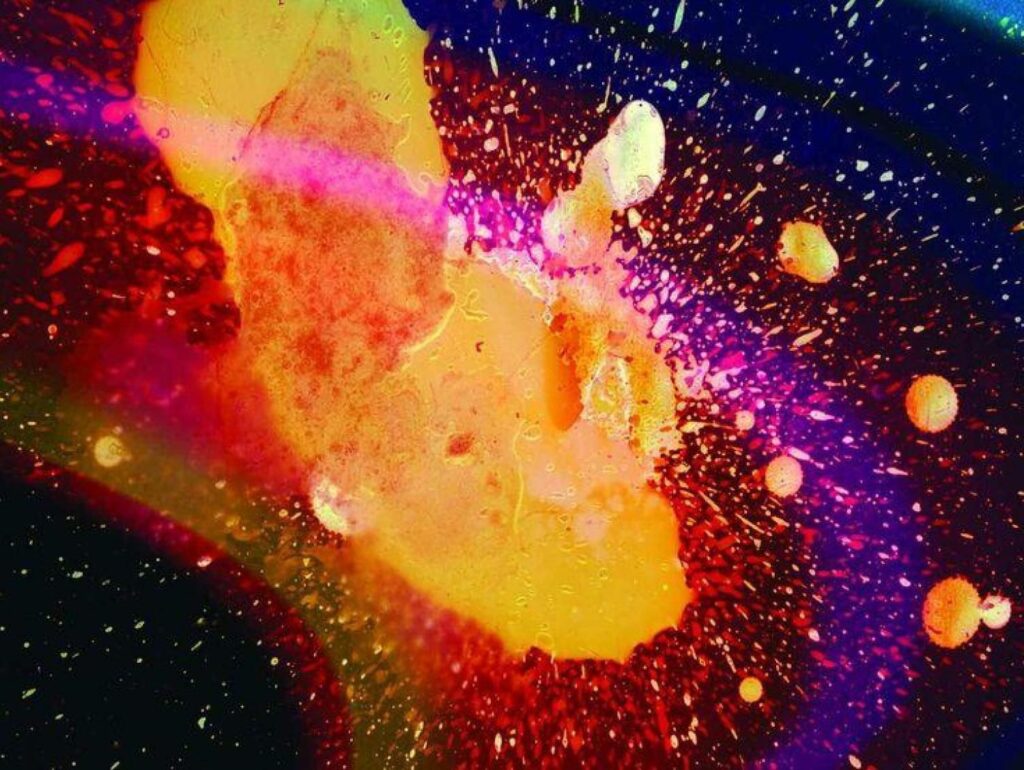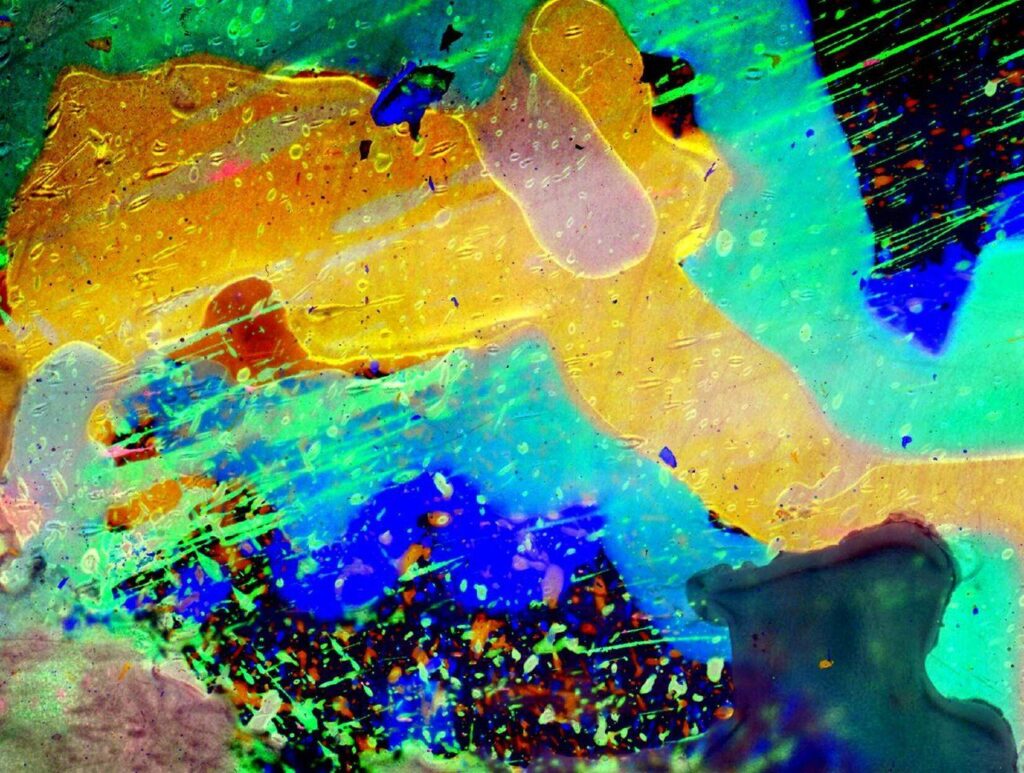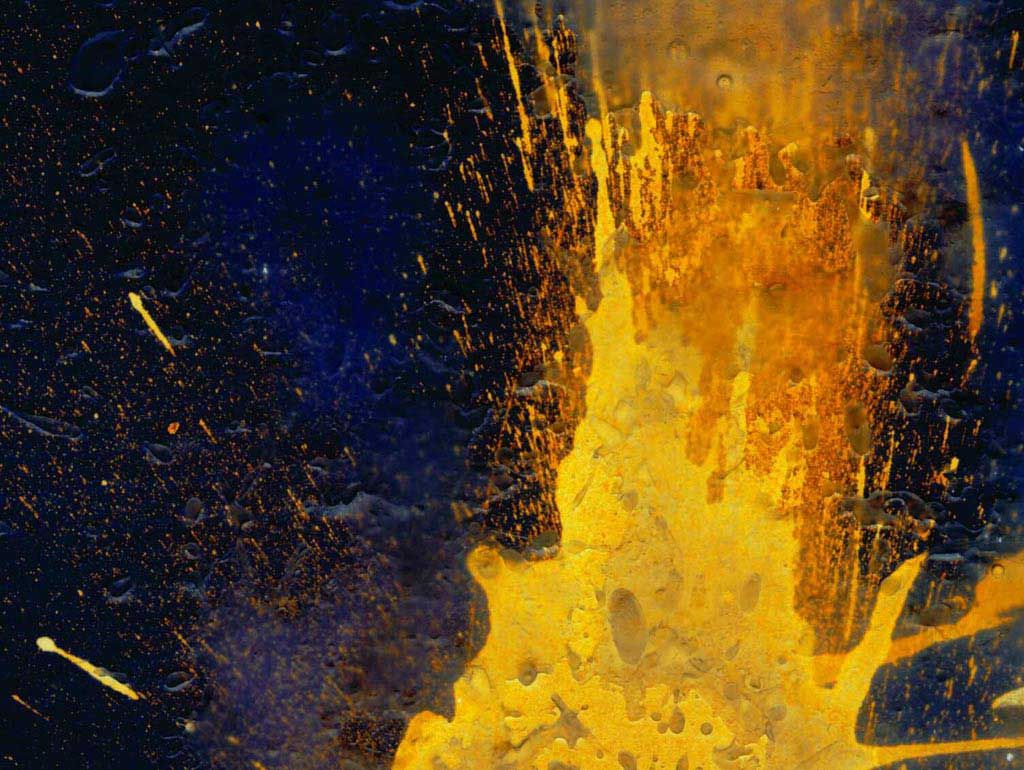
How In Rainbows Permanently Reformed Album Rollouts
As the thirteen-year anniversary of Radiohead’s groundbreaking seventh studio album approaches, we look back at how the group managed to make their rollout just as artistic as the record itself. (Assorted throughout the article are images that were considered for the final album cover).
SAMUEL HYLAND
If Radiohead has proven anything for the past three decades, it’s that the music itself is almost never experimental: what’s truly being toyed with is whether consumers are willing to tolerate shifts from the status quo. Labeling of “experimental” has entailed, over the years, a dismissive misconception that because an LP is not palatable on a wide scale, it’s creation process was comprised of loosely playing around – “experimenting” – in studios costing thousands of dollars per session; basking in assurance that “what comes out comes out;” avoiding fully all organization, precision, intended quality. Radiohead took their collective output too seriously to adopt the latter. After the unwanted mainstream popularity of their debut U.S. single “Creep,” their second full-length sought to bury what hedonistic pop-culture sheen remained from 1992 in layers of rehashed, distortion-waddled self-deprecation. But when that didn’t work in full, they broke the ice once and for all with 1997’s OK Computer: a concept album about dystopian consumerism characterized by alienation at the individual level, wherein in place of faster-paced, conventional, riff-heavy high-charters, the group employed slow-burns soaked in acoustics, screeches, and key-strong ballads that all wound up being digitally skewed in some way by the final master. By then, Radiohead wasn’t the brand new grunge band everyone knew from the MTV Beach House set: they were a conscious powerhouse boasting full understanding of its creative reach, a now-sentient titan bent on exhausting its knowledge of the world without care for grievances garnered by presentation.
On 2007’s In Rainbows, the titan is fully awake. The same creative thread of rule-bending is extended past music alone and into the way it is packaged. Yet, beyond even packaging, the music itself still manages to maintain the same sense of individuality sparked by the breakthrough record released four years earlier. In addition to the conventional rock quartet of guitar, bass, drums, and vocals, instruments used in the making of In Rainbows include string arrangements, various electronics, and the ondes Martenot – all of which, although “the material was great, and we knew it,” (Nigel Godrich, Rolling Stone) were part of a process that saw only one hovering difficulty: “actually, physically doing it.” Godrich’s statement isn’t an exaggeration. Following a lengthy recording period in the group’s Oxfordshire studio described by Thom Yorke as a frustrating waste of time, the group embarked on their first tour in years as a means to rekindle creative energy feared missing. Shows consisted of half-finished songs that evolved in structure performance-by-performance, until, at the tour’s conclusion, Radiohead felt that they had enough momentum to build upon the content they couldn’t push past writer’s block beforehand. And yet, even after this, the recording process still crawled. All previous recordings were scrapped out of dissatisfaction. Producer after producer was enlisted in hopes of conjuring musical visions that were under constant alteration. A single focus for the album remained shrouded in grainy, distant haze. “Everyone had lost…not interest, but momentum,” Thom Yorke said in 2007. “We’d all stopped to have kids. When we got back into the studio, it was just dead.”

Yet what speaks to the creativity surrounding In Rainbows is how well the band took what Yorke construed as stagnance, and manipulated it to make the wait just as artful as the record. Waiting games are the natural crux of album rollouts. Before SoundCloud leaks boasted promises of “CDQ!!!” and snippets from 24-hour Instagram stories circulated the web well after actual bodies of work hit stores, all there was to do was stand by – and unlike the month-by-month basis artists like NBA Youngboy have gotten followers accustomed to, wait periods of over five years between releases were all but extraordinary. Radiohead’s seventh effort was no different. Sitting at four years by 2007, the wait period between OK Computer and In Rainbows was the longest fans had experienced for a new record up to that point, and, to this day, the second-longest since (falling only to a 2011-2016 gap between The King of Limbs and A Moon Shaped Pool). But throughout all four years, despite how slowly things moved in the studio, Radiohead managed to keep consumers entertained with, among other agents, a band-exclusive blog entitled “Dead Air Space” that lived out the opposite implication of its label. It functioned almost as a prescient allusion to what form hints at new music take on today; ten years prior to subtle IG captions or Twitter bios proclaiming “ALBUM 99% DONE,” members logged onto the group’s online presence to document periodic updates for fans who waited weeks and weeks for whatever the next sign of life happened to be. Much like social media hints today, Dead Air Space was tartly indirect in delivery. There were modest lyrical previews of songs pending release, presented in a candid air that made them seem more poetic than musical – and there were accounts of how each individual felt, that, in some way, shape or form found themselves included in the finished product. But there was also the implied expectation that at all points the consumer knew exactly what was going on. Come release time, as practiced up to now, the sole explicit statement in a whirlpool of idiosyncrasies was a matter-of-fact announcement of exactly what all the crypticness meant: “Well, the new album is finished, and it’s coming out in ten days,” Jonny Greenwood wrote in the final post before In Rainbows became available. “We’ve called it In Rainbows.” There was no single direct statement from band to audience announcing work on a new record beforehand. But, there came an unspoken expectation, as it comes with any artist listened to on a broad scale, that as long as retirement wasn’t apparent, new music was always incoming. Dead Air Space was the entire dynamic on a micro scale, characters of both producer and consumer played out by the band on a digital stage – back-of-the-head truths went unspoken, hints were implicit, common knowledge was mystified – yet when the album was finally announced, there was no explaining to do: amidst an electronic maze of zero context, it was impossible not to see it coming.
On the morning of October 10, 2007, Dead Air Space visitors logged onto the blog to find that a new website (inrainbows.com) had been linked to Jonny Greenwood’s prior post about the record having been finished. Clicking the link took users to a page where they’d be able to pre-order a two-disc special edition of In Rainbows for a price that acts both big and small – from the Smashing Pumpkins to the thousands of MySpace bands desperately trying to break ice – had experimented with in the past: anything. Including nothing at all.
“We have a moral justification in what we did in the sense that the majors and the big infrastructure of the music business has not addressed the way artists communicate directly with their fans,” Thom Yorke told BBC News following the reveal. “Not only do they get in the way, but they take all the cash.”

In the music industry, record labels tend to role-play as middle men bridging the gap between artist and audience. But often, the bridge is not as much of a connective presence as it is a boundary. Prior to when artists were able to upload minute-long clips of post-rehearsal merrymaking to Twitter, or go live on Instagram to answer questions from their bedrooms, the sole entity between music and whoever listened to it was the firm in charge of it’s creator. It was the record labels who, whether through billboards paid for, radio appearances arranged, or advertisements booked, translated simple messages of “new stuff incoming” from perfectly communicable art-makers to followers who were now under the illusion that they were hearing directly from their favorite creatives. When you’re front row at a concert, you can feel the artist’s breath on your face. Ever ask yourself why you still feel somewhat detached?
Radiohead’s decision to put a pay-what-you-want price tag on In Rainbows was a direct uppercut to the unsolicited intermediator, a definitive amputation of what futile tertiary body endeavored to referee a two-man game. By cutting XL Recordings from the release process, they demanded that music be reconsidered in the artful sphere it exists in naturally — not the money-forged monopoly a set price tag would go far in pushing the agenda of. Withal, even past the demonstration against monopolized music, this was also a protest against the act of consolidating consumerism with art in general: for centuries, willing and passionate minds have been turned away from the gates of numerous high-end museums, galleries, and exhibitions, because their wallets didn’t match their dedication in quantity. By what means should art be exclusively accessible to people having a certain level of wealth? Leveling off the playing field by removing the mandatory price tag is something most museums have, up to today, adopted. On a musical level, Radiohead’s version of the tactic was the most groundbreaking of the aughts, eclipsing the attempts of most competing groups who, at the time, tried their hands at the same thing. (It must be stated that the ability to take such a sales risk is very much dependent on how much money the artist in question already has in the bank. Radiohead had the vernacular to do so successfully, so they took advantage. It wasn’t nearly as easy for the aforementioned MySpace bands).
The album art for In Rainbows was designed by longtime Radiohead collaborator Stanley Donwood. His process was, conventionally speaking, exploratory. Over a long period that mirrored the creative ebbs and flows of the band recording in Oxfordshire, he created NASA-inspired images by throwing wax at paper, he soaked prints in acid baths, he experimented with photographic etching, and he even looked extensively into the idea of suburban life.

What the process wasn’t, though, was experimental.
“With ‘In Rainbows’ we got to this decrepit stately home in Savernake Forest, Wiltshire and the music was in the early stage and I’d read this very depressing book about what happens when civilisation runs out of oil,” he said in a 2013 interview with NME. “I had this idea that I was going to do drawings of shopping malls as cathedrals surrounded by suburbia. But the music took a different direction and became much more organic, sensual and sexual so I started working with wax and syringes.”The result was what looked like an extraplanetary explosion of sorts, stationed tartly behind names of artist and album in multi-colored rotation. It was not meant to be broadly palatable. It was simply meant to be. Just like Radiohead, he knew exactly what he was doing.
